
As a passive collector of horseshoes, I decided one day to attempt to discern the ages of several shoes that I felt were older. I live in the United States. Most shoes in my area aren’t much more than 150-200 years old, with anything older than that a fine treasure, indeed! Ironically, good information about aging the shoes of horses in the United States is very hard to come by. I did, however, find some good articles and even books on horseshoes from Great Britain.
It seems that nail-on horseshoes have been around for centuries—almost a thousand years, even. During that time, changes in shoe-making evolved according to new discoveries in farriery and blacksmithing. It seems that every century or so saw a new style of horseshoe become popular for different reasons, such as altering the shape of the shoe to allow the frog of the hoof to make contact with the ground, adding more nail holes, alterations for traction, or adding an extra piece of metal to the hoof-side to keep the shoe from slipping and falling off. What is wonderful about all of this is that these discoveries and changes were usually documented in advertisements and journals.
I have discovered three great sources, so far, on dating English horseshoes. One is the Museum Of London, who has a website. They took photos of many old shoes and listed them online, along with their estimated dates. It has been enormously useful in testing myself on dating, and to discover possible dates for unusual shoes in my own collection.
Another good source is a book called ‘The Medieval Horse and its Equipment’ from The Museum of London, edited by John Clark
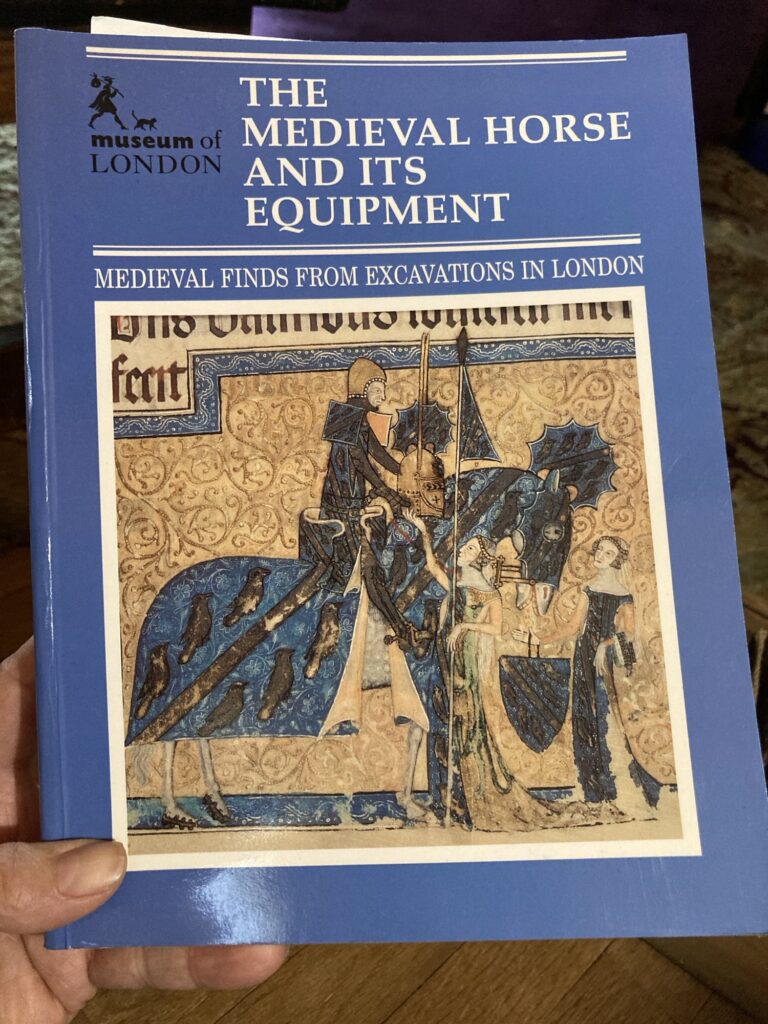
A third excellent source is the Shire Album ‘Old Horseshoes’ by Ivan G. Sparks.

Studying these sources I have learned a little about ancient horseshoes, at least in Great Britain.
With this article, using these sources, I will show off some of the keyhole horseshoes I have in my collection. These shoes were bought from a metal detectorist in Great Britain.

The keyhole shoe tends to be larger and heavier than its predecessors, and the thick branches and heavy heels form sort of a keyhole shape in the center, thus its name. It was mainly used on draft horses. Because the shoe is heavier, it tends to have more nail holes than previous shoes (older shoes tend to have 6 holes, 3 on each branch). Of the 5 keyhole shoes that I have, 3 of them have 8 holes (4 on each branch), 1 has at least 10 holes, and the smallest (which is pony sized) has only 6 holes (because it is a smaller shoe).
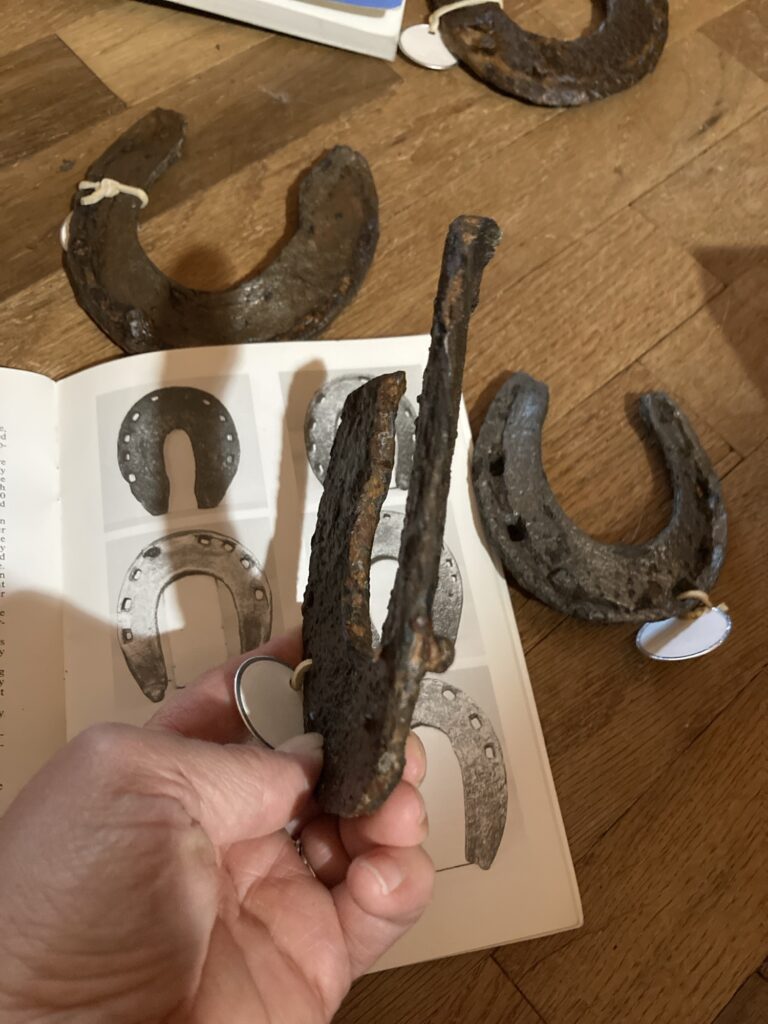
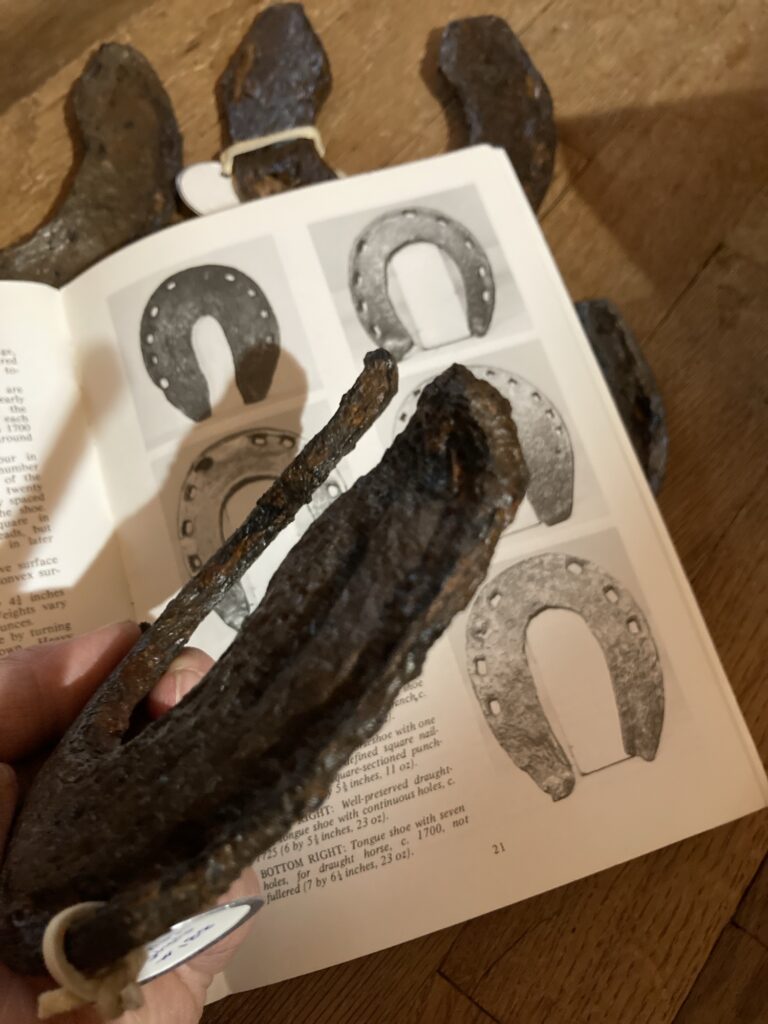
Keyhole shoes also tend to have a concave foot surface. Some have calkins on the heels as well, and some have a fuller (a groove that extends along the branches that the nail holes are in). Mine all have fullers, although some of the fullers are more pronounced than others. Apparently the keyhole shoes from 1700 and onward have a fuller that extends along the whole shoe, heel to toe, while older ones tended to only be fullered along the holes on each branch.

This shoe is fullered all the way around the shoe, so it may be 1700’s or later.
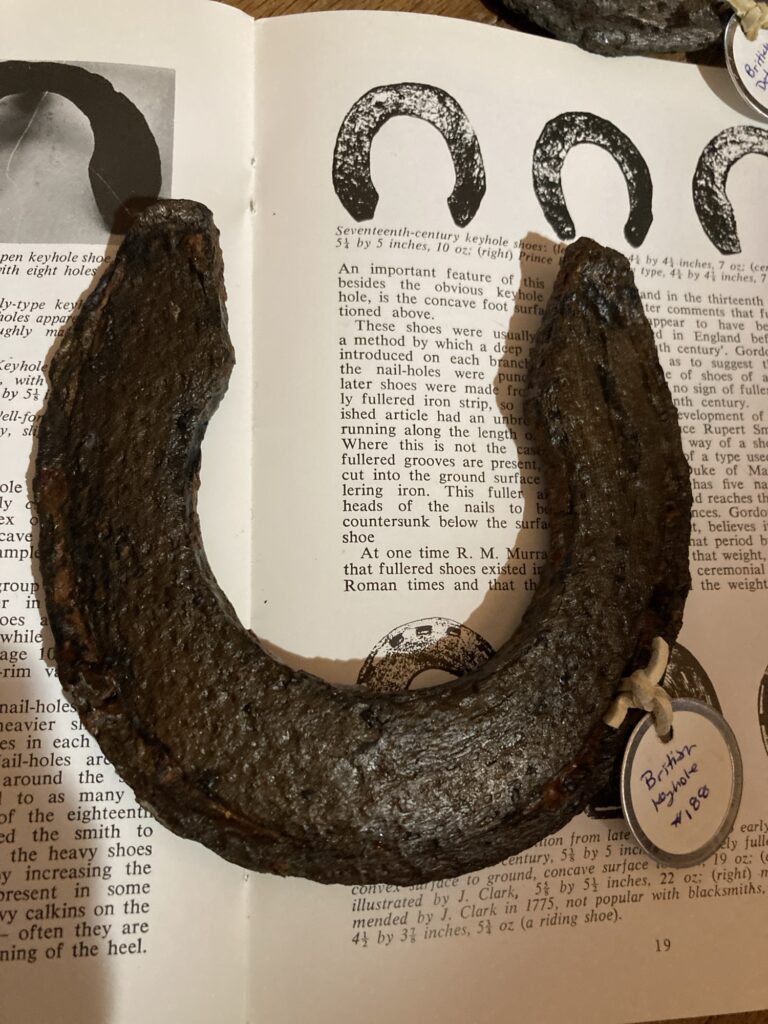
This shoe has a fuller all the way around, and may be from 1700 or later.

This shoe is fullered all the way around, and is probably from 1700 or later.
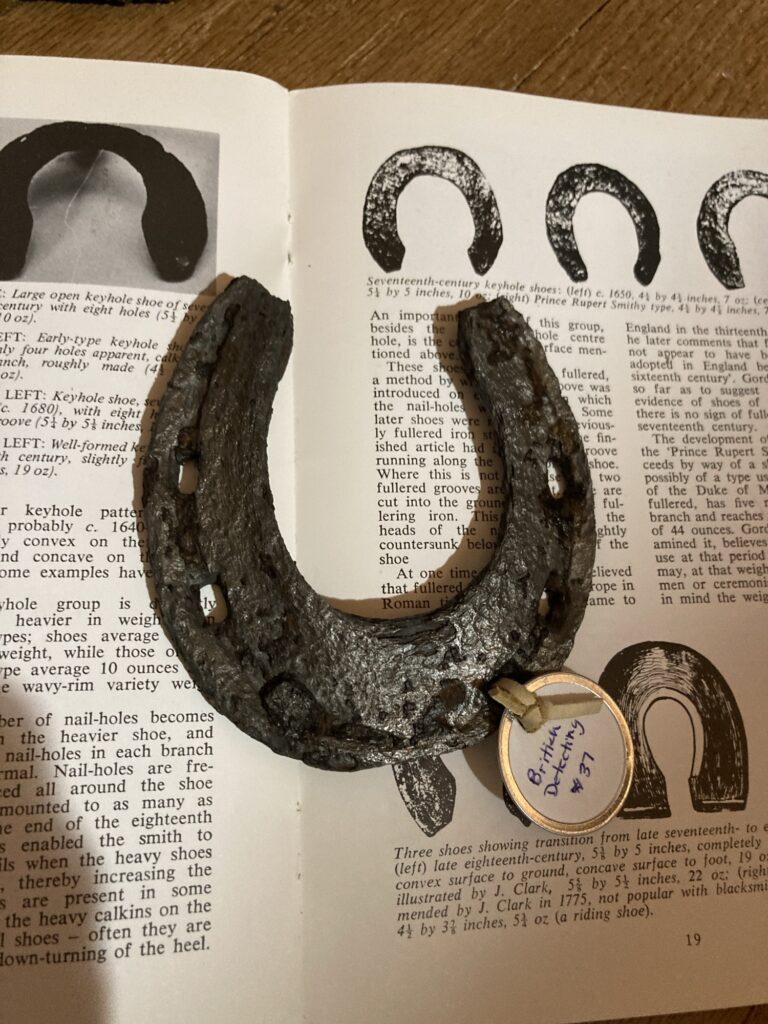
The keyhole shoes were more popular from the mid 1600’s to the 1800’s.
I think one of the reasons I like these shoes so much is because they are so easily recognized by their distinctive shape, which is in sharp contrast to most of the shoes you see today.
